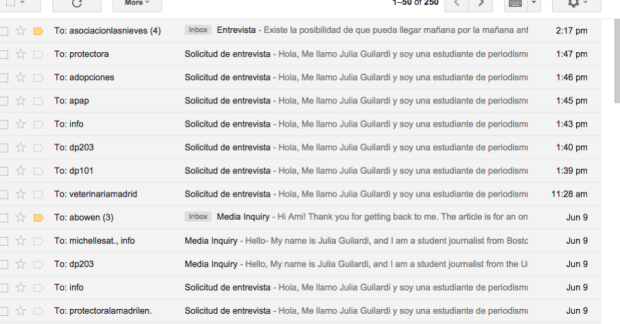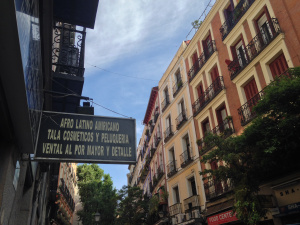NU Journalism Abroad · Spain 2015
Story by Julia Guilardi
MADRID–Nacho Paunero has spent the last 20 years fighting to ensure that homeless and stray animals in Madrid would no longer be killed only 10 days after their rescue.
 Nacho Paunero sits with a colleague and three of the dogs that his shelter, El Refugio, helped protect from euthanization.
Nacho Paunero sits with a colleague and three of the dogs that his shelter, El Refugio, helped protect from euthanization.
Photo courtesy of El Refugio
“Any animal found on the streets, even if it was in a perfect condition, could be slaughtered after 10 days,” said Paunero, who spoke through a translator. Paunero serves as the president of El Refugio, an animal rights organization that specializes in the rescue, care and support of abandoned cats and dogs.
Now, after two decades of unrelenting advocacy, Paunero is finally witnessing this dream become a reality.
On March 12, the Madrid Assembly passed a law banning the euthanization of abandoned dogs and cats, allowing for the entire region, called…
View original post 1,406 more words


























